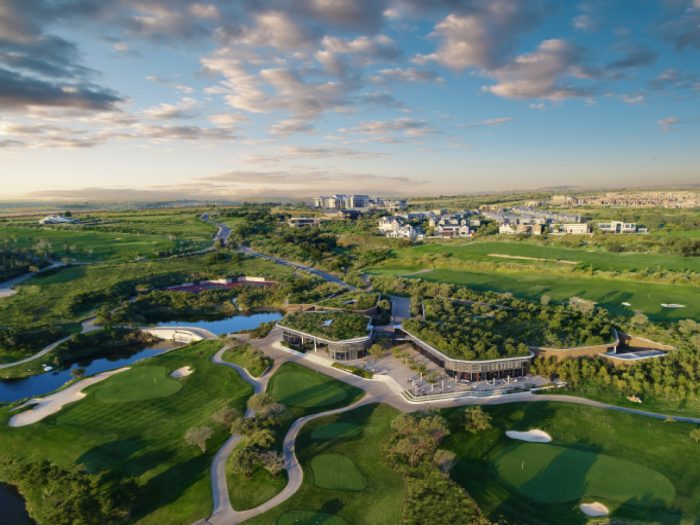Advertisement
The smartest cities in the world are places like New York, London, Amsterdam and Seoul, where digital technology isn’t just about fast internet and plenty of Wi-Fi spots, but also about seamless transport driven by apps, digitalised services, and energy-efficient infrastructure.
In the future, smart cities will be driven by the much anticipated 5G technology, cellular technology that will greatly enhance the speed, coverage and responsiveness of wireless networks. It will not only deliver blazingly fast internet, but also power driverless cars as well as remotely controlled industrial robots and telehealth systems.
In South Africa, we are very much on board in the worldwide race to get ‘smart’. In Johannesburg, MTN recently conducted the first 5G technology and applications trial in Africa, and they say these tests will lead to the commercial deployment of 5G technologies, which the IT sector is anticipating could be rolled out as early as next year.
However, because our cities, unlike Manhattan or Tokyo, are sprawled out, South Africa’s smart city technology is likely to be spotty and inconsistent, with our top-end estates being among the earliest adopters.
Val de Vie in Paarl, for example, was one of the first estates to use biometric access control, and has had fibre to the home for some time now. Fibre optic networks also run all operations in estates like Zimbali in KZN, Waterfall Estate in Midrand, and nearby Steyn City, which is currently installing about 17 antenna base stations for 4G connectivity.
Once 5G technology becomes available, the first communities that operators will look at to roll it out are those that already have fibre in place – estates with fibre optic networks will be natural top contenders.
Advertisement
“The roll-out of 5G infrastructure is a key enabler for smart cities, and it can’t come soon enough. Investors should look out for the opportunities this presents. You can’t go wrong investing in these forward-thinking locations,” comments George Radford, director of Africa at IP Global , an end-to-end property investment company operating across 30 markets worldwide.
An ever expanding range of mobile Apps is defining smart city technology in the meantime. GLOVent CEO, Adriaan Odendaal, noted that one of the challenges of a smart city (estate), where everything is connected, is to provide a single, easy-to-use interface to users from where they are able to monitor and manage everything in and around their home.
At the same time, the ‘smart home’ is also gaining ground in top-end estates around the country. Last month, Zimbali in KZN listed its first fully automated home (operating lighting, audio, central air conditioning and other features from a smart device) for rental, at R 4 500 per night. And in Kirtlington Park in Hillcrest there’s a five-bedroomed house for sale for R 20 million, with a full automation system allowing you to adjust the lighting, modulate geysers and warm your floors at the touch of a button on your smartphone.
Outside these estates, in South African cities, Wi-Fi zones and apps are the extent of smart city technology currently available. Uber, Taxify and lift sharing apps have made inroads on traditional transport modes, and forward-thinking transport is the primary focus of city endeavours, like the expansion of Gautrain routes and stations, one of which is to open soon in Waterfall Estate in Midrand.
Looking even further into the future, once UberAir (flying taxis) becomes a reality, trendy developments away from city hubs will sprout, according to Property Fox CEO Crispin Inglis. “With less road traffic, a city’s trendy crowd will be comfortable living further out of town, and new areas full of good restaurants and bars will spring up,” he says.
‘Green’ solutions are also key to the definition ‘smart city’, and again, our premier estates are the first adopters of sustainable technologies, using solar energy, grey water to irrigate golf courses, LED lighting, and gas for cooking.
At Steyn City, for instance, the irrigation system uses approximately 11 million litres of grey water of the highest quality to irrigate the course and the development’s common areas. Grey water is received from the Northern Works plant and flows into an on-site pre-treatment plant at Steyn City. This now cleaner grey water then flows into the on-site dams, whereby it is aerated, improving its quality even further, before being pumped onto the course.
Comments Radford, “‘Green’ developments represent excellent investment potential, because they will enjoy sustainable growth in the decades to come, while ensuring that their citizens’ quality of life is maintained.”
Suffice to say, smart cities reduce energy consumption and pollution, make transportation, education and health more efficient, and digitalise consumer services. These are priorities in all our major cities, but especially so in communities that attract affluent, safety-conscious and forward-thinking people. Like those who dwell in estates.





Suggest you offer executive summaries- these sort of presentationsa are usually accessed via cell phones and we just don’t have time to read articles that are this long .